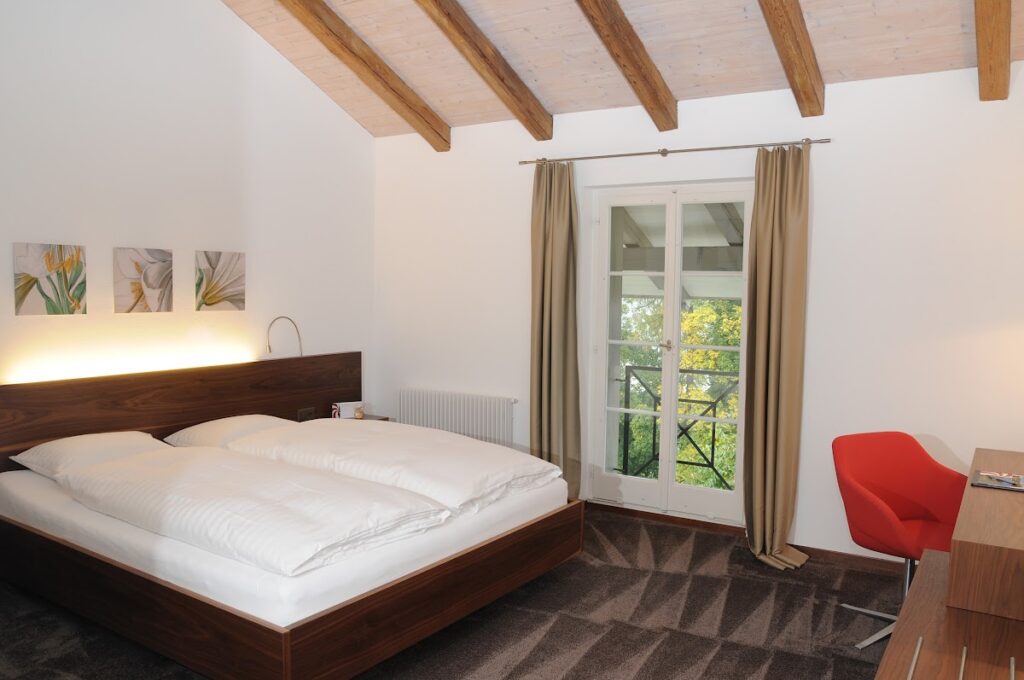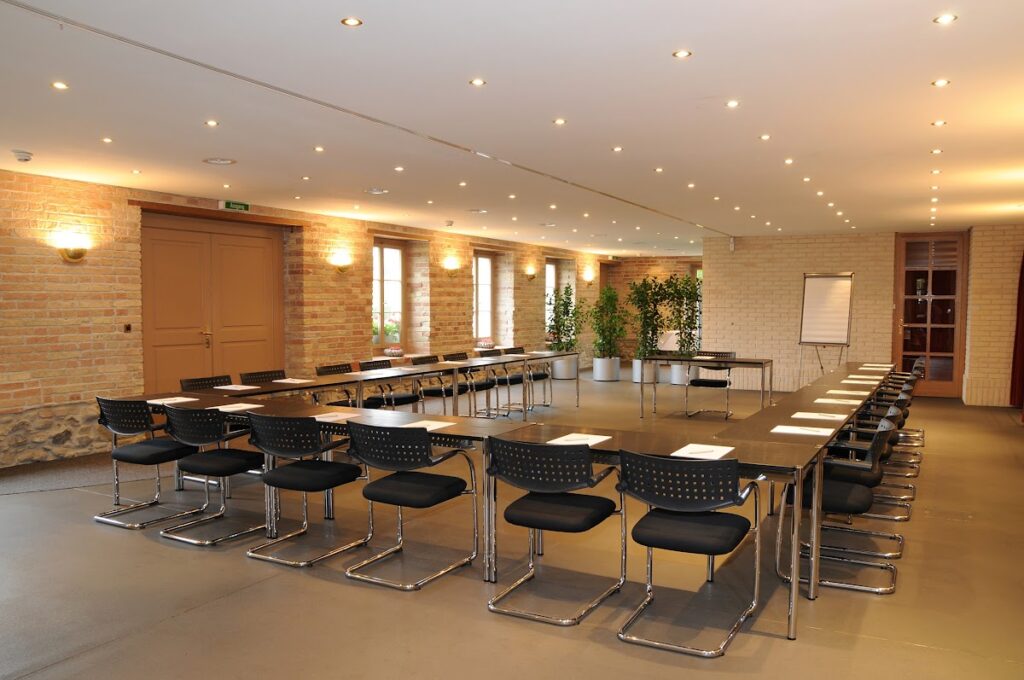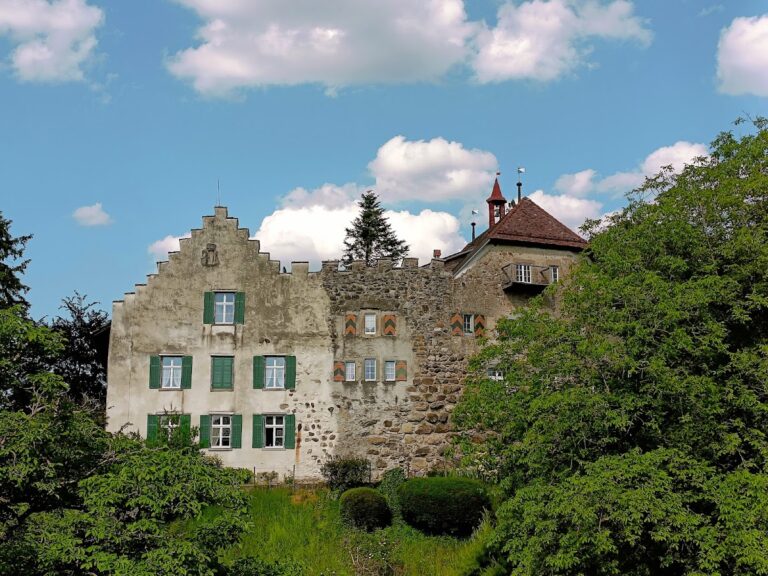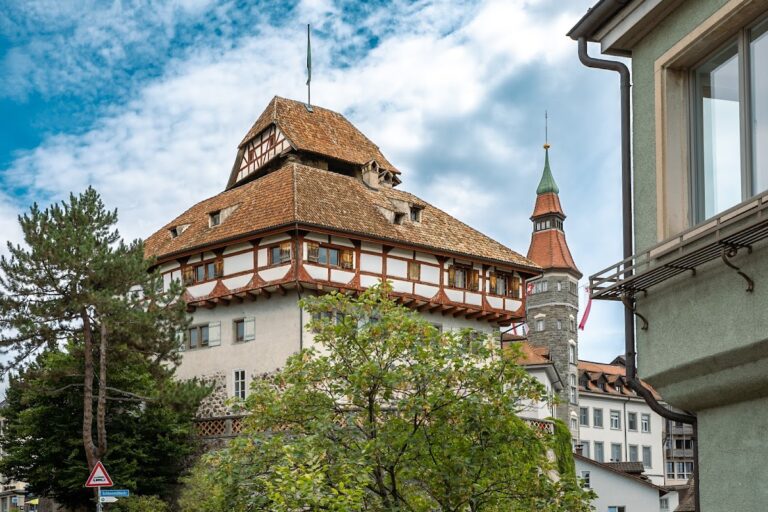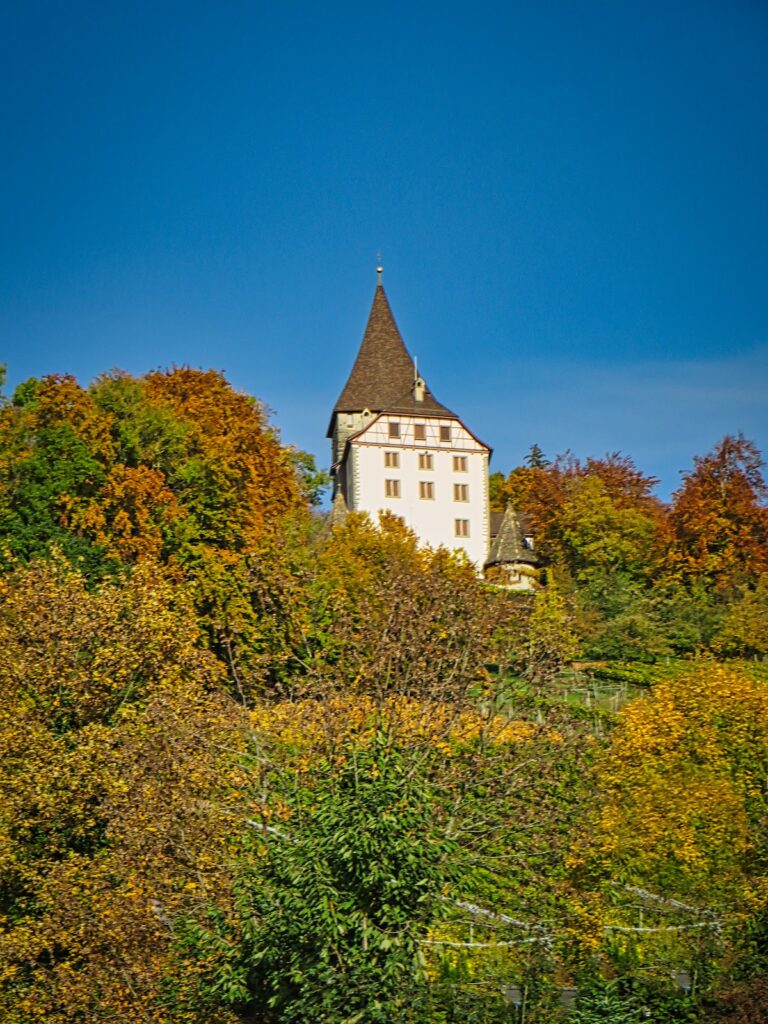Freudenfels Castle: A Historic Medieval and Baroque Site in Switzerland
Visitor Information
Google Rating: 4.7
Popularity: Low
Google Maps: View on Google Maps
Official Website: www.schloss-freudenfels.ch
Country: Switzerland
Civilization: Unclassified
Remains: Military
History
Freudenfels Castle is located near the municipality of Eschenz in Switzerland. It was constructed during the High Middle Ages, most likely in the 12th or 13th century, by the Lords of Eschenz. Built on a rocky promontory about one kilometer southeast of the village, the castle served both defensive and residential purposes. Its strategic position was part of a network of fortifications, including the nearby Hohenklingen and Oberstaad castles, which protected a key junction along the trade routes close to Stein am Rhein.
The castle first appears in written records in 1359, during a period when ownership transferred from the Lords of Hohenklingen to the Dukes of Austria. In the early 17th century, specifically 1617, a significant transformation took place when the original medieval defensive tower was expanded by adding a residential wing. This expansion reflected a shift from purely military functions toward more comfortable noble living quarters.
Ownership of Freudenfels changed hands several times until it was acquired in 1623 by Einsiedeln Abbey, an influential Benedictine monastery. This acquisition was orchestrated under the leadership of Prince-Abbot Augustin Hofmann and his religious community, who aimed to strengthen Catholic influence in the region as part of the Counter-Reformation efforts. The castle became the administrative seat of the newly formed judicial lordship that combined Freudenfels with the Einsiedeln district around Eschenz. This jurisdiction included the modern municipality of Eschenz along with estates in Kaltenbach, Wagenhausen, and Nussbaumen.
Under Einsiedeln’s ownership, Freudenfels Castle served as the residence of the bailiff, an official responsible for local governance, from 1623 until the late 20th century. From 1730 to 1922, the castle also housed the Catholic parish priest of Eschenz, who was traditionally a monk from Einsiedeln Abbey. Starting in 1692, renovation work was carried out by Caspar Moosbrugger, a lay brother of Einsiedeln renowned for his architectural skills. Later, in 1747, master builder Frank Singer was commissioned by Abbot Nicolaus Imfeld to redesign the castle, giving it the Baroque appearance it retains today. Following this transformation, the castle additionally served as a summer retreat for the monks of Einsiedeln.
The political upheavals of the late 18th century, especially during the Helvetic Republic period between 1798 and 1803, resulted in the dissolution of the judicial lordship’s legal privileges. The castle’s administration was reduced to managing the estate and its agricultural activities, continuing under Einsiedeln Abbey’s ownership. In the late 20th century, the castle shifted to secular use: leased in 1988 to Marti Holding AG, it was converted into a center for education and professional training between 1989 and 1992. Since 1996, the property has been held by Schloss Freudenfels AG, connected to the Liechtenstein Academy Foundation and owned by the Princely House of Liechtenstein, serving as a venue for various events. Today, Freudenfels Castle is officially recognized as a cultural heritage site of national importance in Switzerland.
Remains
Freudenfels Castle is situated on a rocky spur overlooking the southern shore of the Untersee, the lower part of Lake Constance. The site’s layout centers around a fortified tower initially erected in the medieval period, which was later expanded with residential wings that blend defensive and domestic architecture. The castle’s construction utilizes local stone foundations typical of medieval fortifications, combined with subsequent Baroque architectural elements introduced during the 18th century renovations.
The original tower, dating from the 12th or 13th century, formed the core of the castle complex and served as a stronghold controlling regional traffic routes. In 1617, the addition of a residential wing expanded the living space, adapting the castle for nobler habitation alongside its defensive role. This wing has been integrated with the medieval tower, creating a compound that reflects centuries of architectural evolution.
Later modifications in the late 17th and mid-18th centuries introduced Baroque stylistic features, courtesy of Caspar Moosbrugger and Frank Singer. These changes included redesigned façades and internal spaces aimed at comfort and aesthetic enhancement, while preserving the castle’s defensive appearance. The expanded complex also featured ancillary structures that supported the castle’s administrative and residential functions.
Nearby historical elements enrich the site’s context, including the pilgrimage church of Klingenzell situated approximately 800 meters to the east. This church, dedicated in 1705 to the Sorrowful Mother Mary, complements the religious affiliations connected to Einsiedeln Abbey. About one kilometer southeast stands a former watchtower associated with Hohenklingen Castle, which was supplanted in the 1930s by the Swiss border fortification known as artillery observation bunker A 5600.
During the late 20th century, adaptations were made to the castle’s buildings to accommodate educational activities. These modifications preserved the historic fabric while allowing the facilities to support modern uses. Today, the castle remains a well-maintained historic complex embodying its layered history, from medieval fortress to Baroque residence and contemporary cultural venue.

